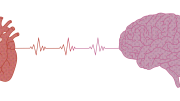Ayush Kumar is an associate professor in the department of microbiology. His research interests include infectious diseases and antimicrobial resistance. An alumnus of the University of Manitoba, Kumar completed his PhD in microbiology in 2004 and returned to the department in 2013.
In those years of absence, Kumar has noticed a shift in the way research is being carried out in the department. “Microbiology is still about microorganisms, but we are digging much deeper,” said Kumar. Part of this shift is due to the accessibility of modern molecular biology techniques.
“There are few stand-alone microbiology departments in the country,” Kumar explained, as he discussed his return to the University of Manitoba.
“There is so much complimentary research. The fact that you can interact with other graduate students and other faculty members on topics that you are interested in is really amazing.
“The interest of students is a good indicator of the health of the department,” Kumar told the Manitoban. Between major degrees, honours degrees, co-op placements, and research projects, microbiology students have a breadth of opportunities.
The Kumar lab has taken an interest in studying Acinetobacter baumannii, a pathogen that is particularly notorious for causing infections in individuals with compromised immune systems.
A. baumannii infections are of concern because this pathogen is resistant to almost every common class of antibiotics, and typically acquired in hospitals or health care settings, meaning it is nosocomial. Other common nosocomial infections include methicillin-resistant Staphylococcus aureus and Clostridium difficile.
“This is the exact reason why the [Centers for Disease Control and Prevention] has classified this organism as a serious threat to human health,” said Kumar.
“I was really fascinated by the fact that it just accumulates antibiotic resistance mechanisms from the environment. It isn’t shy.”
Triclosan is an antibiotic compound that is found in many cleaning products, including toothpaste and soap. The use of triclosan and similar compounds is of interest due to the increasing usage of antibacterial products.
Recent research from the Kumar lab has shown that triclosan treatment can result in A. baumannii developing resistance to many antibiotics in addition to triclosan itself. This resistance develops through an increased expression of a pump on its surface which shoots antibiotics out of the cell.
So why have we seen an increase in the use of antibacterial products like triclosan? Kumar believes it is partially due to the lack of microbiological education.
“Whenever you hear about bacteria in the news it is generally bad. There is this sense of paranoia in society. The whole idea of ‘I don’t want any bacteria on my telephone, or keyboard, or my skin,’ is driving this.”
When a person or company make claims about the bacteria present on an object or surface, the typical focus is the amount of bacteria present. Which bacteria are present is another story, and most of them are harmless.
“The way you see the growth of this antimicrobial product industry tells you that the paranoia is not going away.
“The problem is that we haven’t been able to, at the societal level, distinguish between good and bad bacteria. We know that one per cent of bacteria, or even less of what we can culture in labs, cause disease. Seeing bacteria on your domestic products is not a cause for alarm.
“We certainly need antibiotics, there is no doubt about that. If I went in for surgery tomorrow I’d need antibiotics. Otherwise, chances are I’d end up dying,” said Kumar.
“Evidence shows that there is no advantage of using triclosan in our homes. What it actually does is kill all of the good bacteria, and the bad ones survive.”
“The other key component is better infection control practices. Preventing the spread of pathogens is something we need to get better at. Another thing that we absolutely need is faster diagnostics.”
If you are interested in learning more from Kumar or about infectious diseases in general, he teaches a microbiology course titled “Mechanisms of Microbial Disease.”


